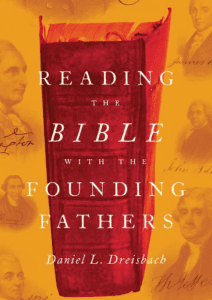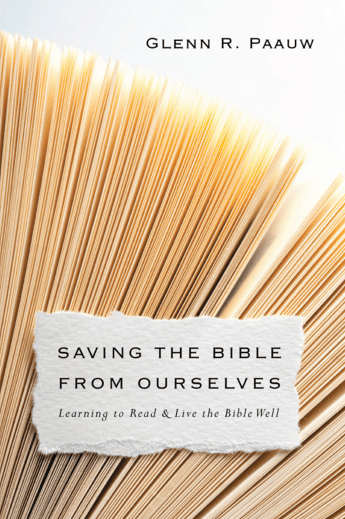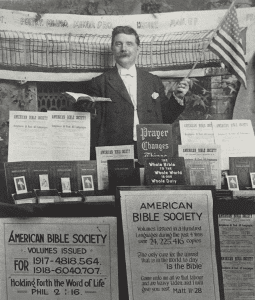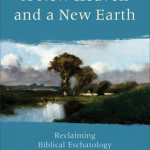The biggest problem many of us have with how we frame the “doctrine” of Scripture is that it isn’t adequate to how Scripture arose as our Sacred Text or how it operates either in the church or with us as Bible readers. Here’s the traditional model: it’s a top-down deposit or transmission of information. In other words, Scripture is framed as revelation.
 I, too, would place Scripture within a framework of revelation, but that’s not enough, nor is it the primary framing. [Handmade chart with Penultimate app on the iPad.]
I, too, would place Scripture within a framework of revelation, but that’s not enough, nor is it the primary framing. [Handmade chart with Penultimate app on the iPad.]
What is your model? What model is most “biblical” for you? And, what do you think of Tom Wright’s take on Sabbath as an illustration of how his model of Bible reading works?
Scripture flows out of the Trinitarian inter-communicative Logos and it is connected to the Holy Spirit and it is a “product” as well of the church. The revelation model has a top-down model that moves from God to revelation intent to inspiration and author/text and inerrancy and authority and reading. It’s all framed as a top-down revelation. It’s inadequate because God chose to manifest truth and grace and redemption through history, at specific moments and over time and through authors and through a community, and that history is nearly eliminated in the revelation model. The model needs supplementation to frame a view of Scripture that is organic to how Scripture came into existence. This top-down model is too much golden tablets dropping from the sky.
But Scripture at the organic level emerges from authors who are part of God’s People (Israel, Church), and the books in Scripture arise out of particular circumstances and are written by authors with intent and agenda, and the individual authors interact with one another (Micah, Isaiah, Matthew, Romans, Hebrews, Revelation) and carry the Story forward so that the last version of the Story can reframe the former versions. And then there is the ongoing life of the church — and tradition. Many of us think the revelation model tells us very important things, but it is inadequate.
That is why so many of us value the voice of Tom Wright in this discussion. His newest book, Scripture and the Authority of God: How to Read the Bible Today, is both a revision and an expansion of his former book The Last Word.
 This book of Tom’s both revises and expands and, in particular, adds chapters that are test cases for how his theory of Scripture works out. He examines two topics, Sabbath and Monogamy. Today I will look at his Sabbath chapter, but first a brief on the big ideas of the book.
This book of Tom’s both revises and expands and, in particular, adds chapters that are test cases for how his theory of Scripture works out. He examines two topics, Sabbath and Monogamy. Today I will look at his Sabbath chapter, but first a brief on the big ideas of the book.
The expression “authority of Scripture” is shorthand for “the authority of the triune God, exercised somehow through Scripture” (21). There is something important here, for Wright acknowledges that authority is God’s — and derivatively of Scripture. Any time someone equates the two, there opens the possibility for idolatry to occur. Furthermore, Wright is keen on showing that this authority of God is God’s authority in working out the Kingdom mission for his people and creation. Scripture, then, is a sub-branch of mission, the Spirit, eschatology, and the Church itself (29). Again, very important.
When Wright comes to sum up his entire argument, on pp. 115-116, he says this: The authority of Scripture is “a picture of God’s sovereign and saving plan for the entire cosmos, dramatically inaugurated by Jesus himself, and now to be implemented through the Spirit-led life of the church precisely as the scripture-reading community.” Thus, the “authority of Scripture” is put into action in the Church’s missional operations. Scripture, he says, is more than a record of revelation and was never simply about imparting information — it is God’s word to redeem his people as God works out his plan for the entire created order. And you may know how the Bible teaches what Tom calls a 5-Act play: creation, fall, Israel, Jesus, Church. We are in the 5th Act now.
Now to Sabbath. Tom provides an exceptional illustration of how both to read Sabbath in its OT setting, what Jesus and Paul “did” to that teaching, how the Jubilee principle extends the Sabbath principle, and how Jesus is the transition to a new kind of time — death and resurrection and new creation, and thus how the Sabbath principle finds fulfillment in Jesus himself, and then he probes how to live that Sabbath principle out in our world. Here are some highlights:
1. In the OT Sabbath was a strong commandment, it was the day YHWH took up abode in the temple of creation (here he chimes in with John Walton) and asked image-bearers to enjoy that same rest.
2. Sabbath shows that history is going somewhere, it is a temporal sign that creation is headed toward that final rest, and it is sacred time.
3. Sabbath has to be connected to Jubilee, and therefore to justice and compassion for the poor, and that means Sabbath and Jubilee point us toward the restoration of creation.
4. Jesus thought the entire Sabbath principle pointed toward himself. Time was fulfilled in him; a new kind of time begins with him. Paul does not seem to care about Sabbath, and he observes its absence in Romans 13:9; Col 2:14-16; Rom 14:5-6. I have to be brief: it’s about time’s fulfillment. Sacred time finds its way to Jesus Christ and new creation.
5. To continue celebrating sabbaths is to focus on the signposts when we have already arrived. Thus, “Come to me and I will give you rest.” You don’t need the alarm clock when the sun is flooding the room with its light.
6. The early Christians didn’t transfer Sabbath to Sunday.
7. We don’t need to back up into a Sabbatarianism.
8. We “celebrate” instead of “rest” — a kind of celebration rest. We reserve this day for new creation life. Music, the meal, family, service, peace, justice, love — these are the notes of Sunday for those who see the fulfillment of Sabbath in Jesus.
We live in a perpetual sabbath.















